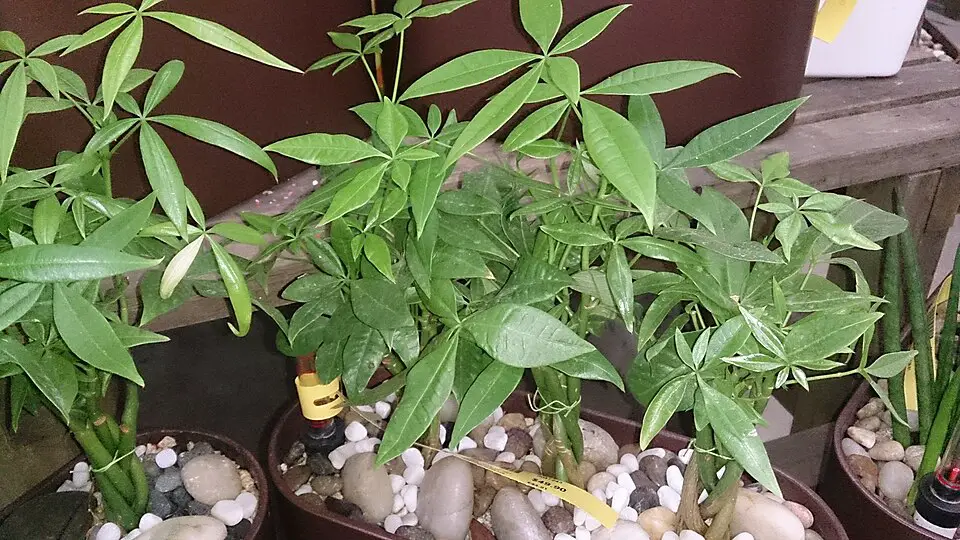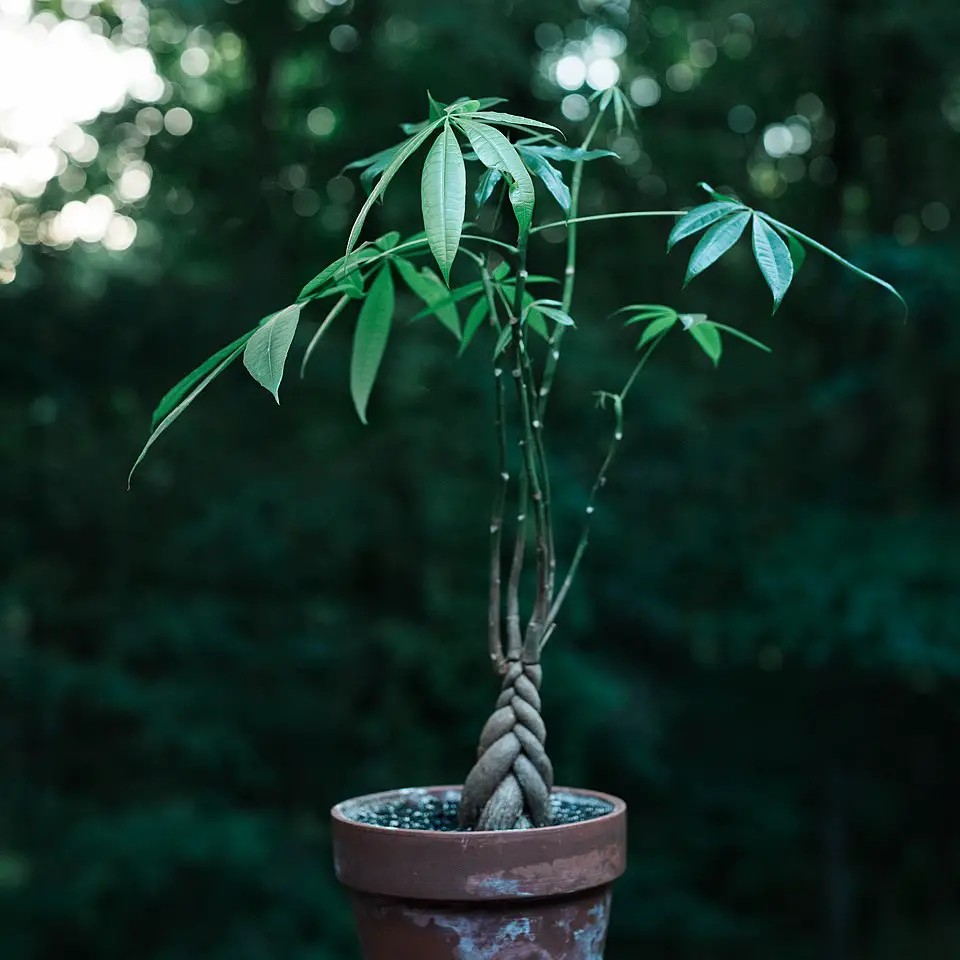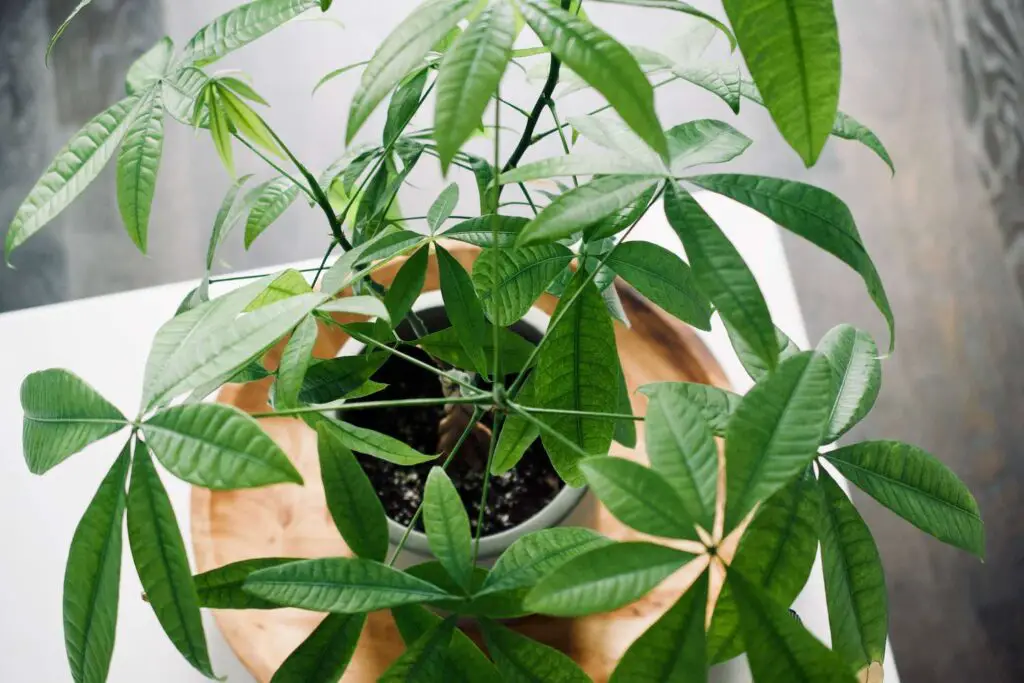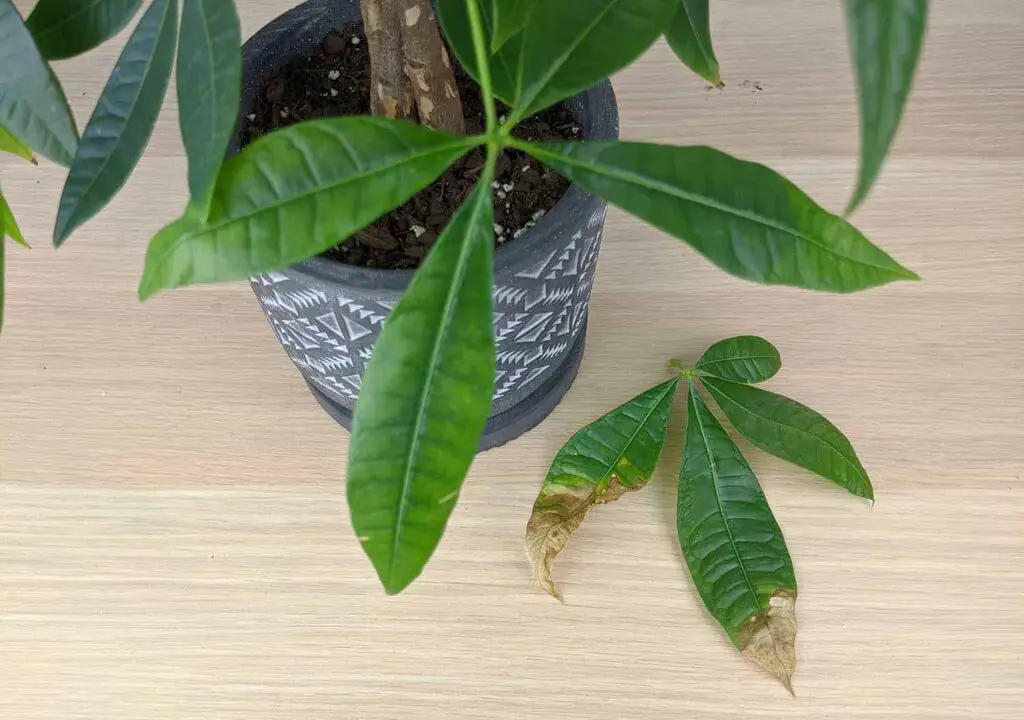The Money Tree plant thrives in environments with humidity levels between 40% and 60%. Maintaining this level of humidity is crucial for its health, as it helps prevent leaf drop and promotes lush growth. Proper care ensures your Money Tree remains vibrant and resilient.
Understanding the Money Tree
The Money Tree, scientifically known as Pachira aquatica, is a popular houseplant known for its distinctive braided trunk and glossy green leaves. It is often associated with good fortune and prosperity in various cultures. Native to Central and South America, this plant grows in wet, swampy areas, which influences its care requirements, especially regarding humidity.

Creating the perfect environment for your Money Tree involves understanding its natural habitat. In the wild, this plant enjoys a humid atmosphere where moisture is abundant. Thus, replicating these conditions at home is essential for its growth and overall well-being.
Why Humidity Matters
Humidity plays a significant role in the health of your Money Tree. When humidity levels are too low, the plant can suffer from several issues:
- Leaf drop
- Brown leaf tips
- Stunted growth
- Increased susceptibility to pests
Conversely, maintaining optimal humidity levels can enhance the plant’s appearance and vitality. A well-hydrated Money Tree showcases vibrant foliage and robust growth, making it a stunning addition to any indoor space.

Optimal Humidity Levels
The ideal humidity range for a Money Tree is between 40% and 60%. This range allows the plant to absorb moisture efficiently without becoming waterlogged. Here are some key points to consider:
| Humidity Level | Effects on Plant |
|---|---|
| Below 30% | Causes stress, leading to leaf drop and dryness. |
| 30% – 40% | May hinder growth; leaves may show browning tips. |
| 40% – 60% | Optimal for health; enhances growth and leaf vitality. |
| Above 70% | Can lead to mold and fungal issues. |
Measuring Humidity Levels
To maintain the appropriate humidity for your Money Tree, it is essential to measure the humidity levels in your home accurately. You can use a hygrometer, a device specifically designed to measure humidity. These can be found in garden centers or online and are relatively inexpensive.
Placing a hygrometer near your Money Tree will provide you with real-time information about the humidity levels in its environment. This knowledge allows you to make adjustments as needed to maintain the ideal conditions for your plant.

Methods to Increase Humidity
If you find that the humidity levels are consistently too low for your Money Tree, there are several methods to increase moisture in the air:
- Grouping Plants: Placing your Money Tree near other plants can create a microenvironment with higher humidity.
- Humidifiers: Using a room humidifier can help maintain consistent humidity levels.
- Misting: Lightly misting the leaves with water can temporarily increase humidity but should not replace other methods.
- Pebble Trays: Placing a tray filled with pebbles and water under the pot can help improve humidity around the plant.
By implementing these strategies, you can create a more suitable environment for your Money Tree, encouraging it to thrive and flourish in your home.
Signs of Low Humidity in Money Trees
Recognizing the signs of low humidity is essential for maintaining your Money Tree’s health. Understanding these indicators can help you take timely action to create a better environment for your plant. Here are some common signs that your Money Tree may be suffering from low humidity:
- Leaf Dropping: If you notice leaves falling off your Money Tree, it may be a sign of stress due to insufficient humidity. This is particularly common in the lower leaves.
- Browning Leaf Tips: The tips of the leaves may turn brown and dry out when humidity levels are low. This is a clear indication that the plant is not receiving enough moisture.
- Wilting Leaves: Leaves may appear limp and droopy when they lack moisture. This wilting can lead to further deterioration if not addressed.
- Leaf Curling: Leaves may begin to curl inward as the plant tries to conserve moisture, which can hinder its overall health.
If you observe any of these signs, it is crucial to assess the humidity levels in your home and take steps to improve them.

Factors Affecting Indoor Humidity
Indoor humidity can fluctuate based on various factors. Understanding these can help you maintain a stable environment for your Money Tree. Some common factors include:
- Seasonal Changes: During winter months, heating systems can significantly reduce indoor humidity levels. Conversely, summer months may bring higher humidity due to increased temperatures and humidity outside.
- Air Conditioning: While air conditioning is effective for cooling, it can also lower humidity levels inside your home, especially in dry climates.
- Ventilation: Poorly ventilated rooms tend to have lower humidity. Ensuring proper airflow can help maintain a balanced environment.
- Room Size: Larger rooms may have lower humidity levels compared to smaller, enclosed spaces where moisture can accumulate more easily.
Being aware of these factors allows you to take proactive measures in maintaining optimal humidity for your Money Tree.
Seasonal Care Tips for Maintaining Humidity
The care your Money Tree requires can vary with the seasons. Adjusting your humidity control methods according to the season will help ensure your plant remains healthy year-round. Here are some seasonal tips:
Spring and Summer Care
During the warmer months, humidity levels may naturally rise, but it is still important to monitor them closely. Here are some tips for these seasons:
- Increase Misting Frequency: As temperatures rise, enhancing the frequency of misting can provide extra moisture without overwatering the roots.
- Utilize Pebble Trays: Ensure pebble trays are filled with water, as they can provide a consistent source of humidity during dry spells.
- Avoid Direct Sunlight: While your Money Tree enjoys bright light, too much direct sunlight can dry out the leaves and surrounding air quickly.
Fall and Winter Care
The colder months often bring drier air due to heating systems. Here’s how to combat low humidity during this time:
- Use a Humidifier: Invest in a humidifier to maintain consistent humidity levels throughout your home during winter.
- Group Plants Together: Bringing plants together can create a microenvironment with higher humidity, benefiting all plants in the vicinity.
- Keep Away from Heating Vents: Position your Money Tree away from heating vents or radiators to prevent excessive drying of the air around it.
By adjusting your care routine according to the seasons, you can significantly improve your Money Tree’s chances of thriving in varying indoor conditions.
The Importance of Soil and Potting
The type of soil and potting practices you use can also influence the humidity levels around your Money Tree. Using the right soil mix is crucial for retaining moisture while ensuring proper drainage. Consider the following:
- Aerated Soil Mix: A well-aerated soil mix containing peat moss or coconut coir helps retain moisture without becoming overly saturated.
- Pots with Drainage Holes: Ensure that your pot has adequate drainage holes to prevent water from pooling at the bottom, which can lead to root rot.
- Regular Repotting: Repotting every couple of years allows for fresh soil, which retains moisture better and provides essential nutrients for growth.
Paying attention to these aspects of soil and potting will contribute positively to maintaining humidity levels around your Money Tree.
Pest Management and Humidity
Humidity levels can also impact pest populations around your Money Tree. High humidity can create an environment conducive to certain pests, while low humidity can stress the plant, making it more susceptible to infestations. Understanding how to manage pests effectively is crucial for maintaining the health of your Money Tree.
Common Pests Affecting Money Trees
Several pests may invade your Money Tree if humidity levels are not optimal. Here are some common ones to watch out for:
- Spider Mites: These tiny pests thrive in dry conditions and can cause significant damage by sucking sap from the leaves, leading to stippling and discoloration.
- Aphids: Aphids can be attracted to stressed plants. They feed on the sap and can reproduce quickly, creating large colonies.
- Mealybugs: These pests appear as white, cottony masses on stems and leaves. They can weaken your plant by feeding on its sap.
- Scale Insects: Scale insects attach themselves to the branches and leaves, causing yellowing and leaf drop due to their feeding habits.
Being aware of these pests will help you take preventive measures and address any infestations early on.
Preventive Measures
To protect your Money Tree from pests, consider implementing these preventive measures:
- Regular Inspections: Check your plant frequently for any signs of pests. Early detection is key to effective management.
- Maintain Optimal Humidity: Keeping humidity levels in the ideal range helps make your Money Tree less attractive to pests like spider mites.
- Clean Leaves: Wiping down leaves with a damp cloth removes dust and can help prevent pests from settling in.
- Isolation: If you bring a new plant into your home, isolate it for a few weeks to ensure it is pest-free before introducing it to your other plants.
Watering Practices and Their Impact on Humidity
Watering practices play a vital role in maintaining humidity levels around your Money Tree. Proper watering ensures the plant receives enough moisture while avoiding overwatering, which can lead to root rot and mold issues.
Understanding Your Plant’s Water Needs
The watering frequency for a Money Tree can vary based on several factors, including humidity levels, temperature, and the size of the pot. Here are some guidelines:
- Watering Frequency: Generally, you should water your Money Tree every 1 to 2 weeks. Allow the top inch of soil to dry out before watering again.
- Signs of Underwatering: If the leaves are drooping or curling, it may indicate that your plant is not receiving enough water.
- Signs of Overwatering: Yellowing leaves and a soggy potting mix are signs of overwatering, which can lead to root rot.
Techniques for Effective Watering
To ensure that your Money Tree receives the right amount of water while maintaining suitable humidity levels, consider these techniques:
- Bottom Watering: Place the pot in a tray of water for about 30 minutes. This method allows the plant to absorb water from the bottom up, promoting healthy root growth.
- Using Room Temperature Water: Watering with room temperature water prevents shocking the roots with cold water, which could harm the plant.
- Avoid Water on Leaves: Try to water the soil directly without splashing water on the leaves. Excess moisture on leaves can lead to fungal issues.
Seasonal Adjustments in Watering
As with humidity, watering needs can change with the seasons. Adjusting your watering routine accordingly will help keep your Money Tree healthy throughout the year.
Spring and Summer Adjustments
During warmer months, your Money Tree may require more frequent watering due to increased evaporation rates. Consider the following:
- Monitor Soil Moisture: Check soil moisture more frequently during spring and summer to ensure adequate hydration.
- Increase Frequency: Be prepared to water more often if temperatures rise significantly.
- Avoid Watering During Peak Heat: Water early in the morning or late in the evening to minimize evaporation loss.
Fall and Winter Adjustments
In colder months, your Money Tree’s growth may slow down, requiring less frequent watering:
- Reduce Watering Frequency: Cut back on watering as the plant uses less moisture during dormancy.
- Check Soil Dryness: Always check the top two inches of soil; if it feels dry, it’s time to water.
- Avoid Cold Drafts: Ensure that your Money Tree is not exposed to cold drafts, which can stress the plant and affect its water needs.
By understanding how watering practices influence humidity and overall plant health, you can ensure that your Money Tree thrives in its environment.
Common Mistakes to Avoid
When caring for your Money Tree, being aware of common mistakes can help you provide the best environment for your plant. Here are some pitfalls to avoid:
- Overwatering: One of the most frequent issues with Money Trees is overwatering. Always ensure the top layer of soil is dry before adding more water. This helps prevent root rot.
- Ignoring Humidity Levels: Many plant owners overlook humidity needs. Regularly check humidity levels and adjust them as necessary, especially in dry seasons.
- Using Poor-Quality Soil: Cheap potting soil may lack essential nutrients and drainage. Invest in a high-quality mix designed for tropical plants.
- Placement in Direct Sunlight: While Money Trees enjoy bright light, direct sunlight can scorch their leaves. Place your plant in a location with filtered light.
- Neglecting Pests: Failing to inspect for pests regularly can lead to infestations. Early detection is key to managing pests effectively.
Avoiding these common mistakes will help ensure your Money Tree remains healthy and vibrant.
Additional Care Tips
Beyond humidity and watering, several other care aspects can contribute to the overall health of your Money Tree. Here are some additional tips to keep in mind:
- Fertilization: During the growing season (spring and summer), use a balanced liquid fertilizer every four to six weeks. This will provide essential nutrients that support growth.
- Pruning: To encourage bushier growth, consider pruning your Money Tree. Remove any dead or yellowing leaves and trim back excessive growth.
- Rotate Your Plant: Rotating your Money Tree occasionally ensures even light distribution, promoting balanced growth on all sides.
- Temperature Control: Maintain room temperatures between 60°F and 75°F (15°C and 24°C). Avoid placing your plant near heaters or air conditioning vents that can cause temperature fluctuations.
Incorporating these practices into your care routine will create an ideal environment for your Money Tree, leading to healthier foliage and more robust growth.
Final Thoughts
Caring for a Money Tree involves understanding its specific needs, particularly regarding humidity. By providing the right levels of moisture in the air, monitoring watering practices, and addressing seasonal changes, you can create an optimal environment for this beautiful plant. Regularly checking for signs of low humidity or pest infestations allows you to take proactive measures, ensuring your Money Tree remains healthy and vibrant.
Additionally, being mindful of soil quality, potting practices, and general care tips enhances your chances of success in growing a thriving Money Tree. Embrace the journey of nurturing this plant, as it not only beautifies your space but is also believed to bring good luck and prosperity.
With the right knowledge and care techniques, your Money Tree can flourish and become a cherished part of your home for years to come.
